From animal skins to intricate designs, human clothing has taken an adventurous journey from necessity to social spectacle.
Wearing clothes is one of the points of human evolution that has responded to the needs of survival and even the expression of his social identity. Because clothing, like stone and bone tools, does not last over time, evidence such as early needles, traces on animal bones, and even genetic analysis of lice suggests that humans were regularly wearing clothing from around 170,000 years ago.
Also, there is evidence of the use of animal skins for heating up to 300,000 years ago; A history that shows the first steps of man to protect himself against nature. In this article, we will discuss the story-filled path of discovering human clothing.
What you will read about the history of clothing in this article:
When did humans start wearing clothes?
Clothing does not last as long as ancient artifacts made of stone, bone, and other hard materials; Therefore, scientists have to get creative in answering the complicated question of when humans started wearing clothes.
Photo source: faircompanies; Name of the photographer: unknown
The evidence used to answer this question comes from several main sources; Bones with evidence of skinning, sewing needles, awls, and lice are among the sources available. University of Florida biologist David Reed says:
We sought to understand what changes occurred in the evolutionary history of lice that might be associated with the loss of body hair in humans and then the subsequent use of clothing in humans.
Lice and their relationship with the evolution of clothing in humans
Lice are amazingly adapted to their habitats; For example, a type of louse that has evolved to live in the hair of the human head cannot live in the hair of other areas of the human body. However, before human ancestors lost their hair, these lice probably covered their entire body. By studying DNA and examining the evolutionary history of lice, scientists have estimated that the two types of lice diverged from each other about three million years ago.
On the other hand, a human genetics study shows that humans lost their body hair around 1.2 million years ago. By considering these studies, it is possible to find a specific time range when early humans lost their hair.
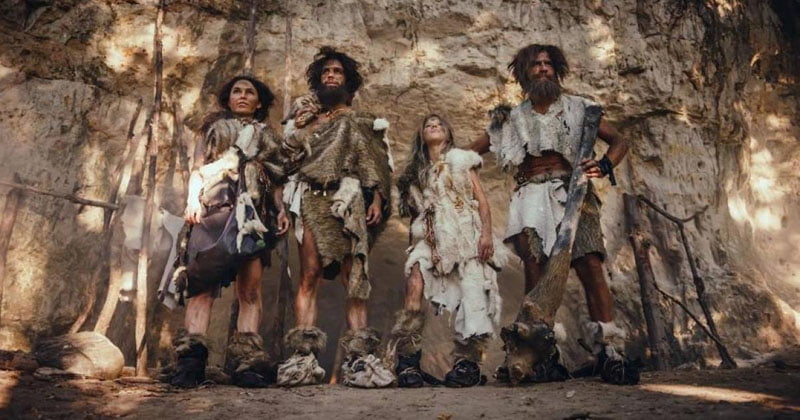
Photo source: Ancient Origins; Name of the photographer: unknown
Another type of lice also evolved to live in human clothing; These types of lice are more flexible and can live on a wide variety of fibers.
According to David Reid, a biologist at the University of Florida, lice that continue to live in human clothing feed on the human body, on average, once a day and then return to the clothing; Where it is safer for them. He goes on to explain that this strange behavior has helped scientists to estimate the approximate time when modern humans began to use clothing regularly.
According to this research, the separation of head lice from clothes lice indicates that modern humans started wearing simple clothes about 170,000 years ago, at the same time as the period before the last ice age. However, there is evidence that early human species used coats to protect against the cold even earlier.

A man in prehistoric clothing in a museum in Slovakia; Photo source: EXARC; Name of the photographer: unknown
the path of clothing evolution; From basic clothing to everyday wear
According to research by Ivo Verheijen, a doctoral student at the University of Tübingen, Germany, and his colleagues, which was published in April 2023, the marks on the bones of bears found at the Paleolithic site of Schöningen. In Germany, it shows that hominids and probably the Heidelberg man species or “Homo heidelbergensis” (Homo heidelbergensis), ca. 300,000 years ago, they used bear skin to keep themselves warm.
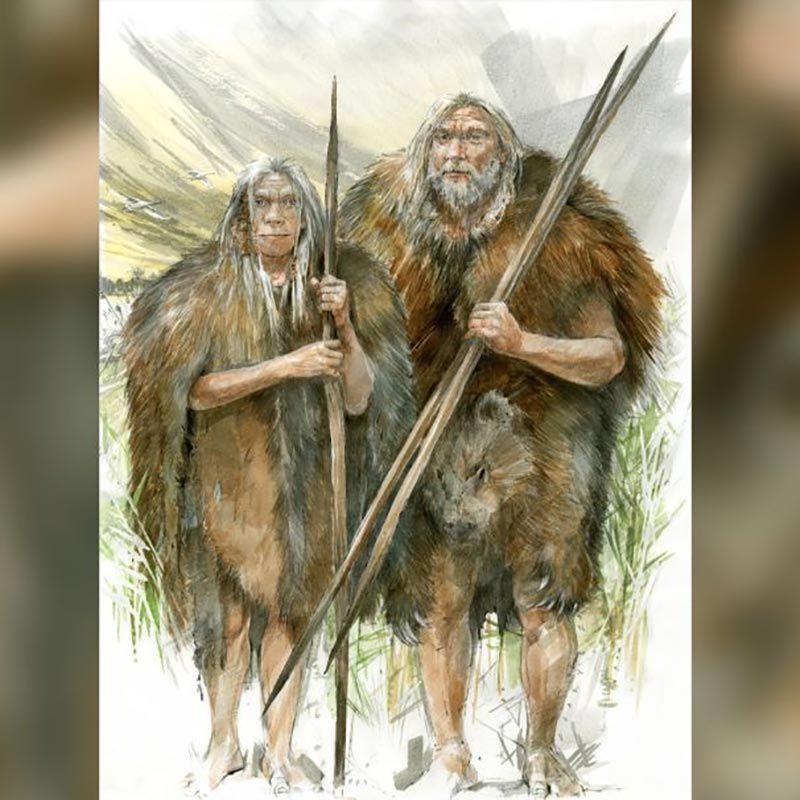
a picture of a Heidelberg man with a bear skin cover; Image source: CNN; Artist Name: Unknown
Ivo Verhein, a researcher at the University of Tübingen, Germany, says:
If you skin an animal, most of the cut marks you leave are on the ribs, skull, arms and legs, and that’s exactly what we found at Schöningen. We compared this pattern to other sites from the same time period, where we also found similar markings on hands, feet, and skulls. From this point of view, it seems that the anthropoids of that period used the skins of bears.
Evidence of skinning of animals does not necessarily mean that they were used for clothing; Because it is possible that the skins were used to build the shelter; However, this German researcher believes that due to the temperature being about two degrees Celsius lower in that period, these skins were probably used to keep humans warm. Verhein adds further:
Humans had to be active in their surroundings to collect and prepare food; Therefore, some kind of cover seems necessary to survive in such conditions.
However, it begs the question, if there is evidence of clothing dating back to 300,000 years ago, and clothes lice did not evolve until 170,000 years ago, what does this mean? In the meantime, what happened?
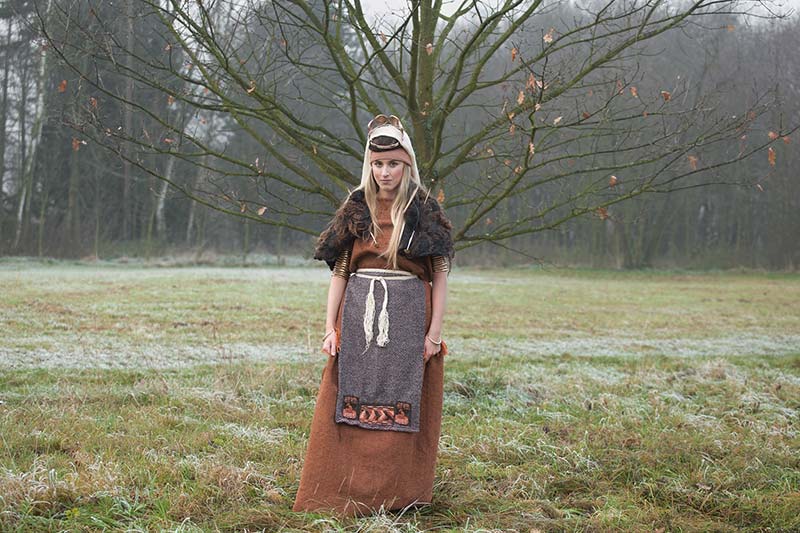
A woman in a prehistoric dress in a museum in Slovakia; Photo source: EXARC; Name of the photographer: unknown
Lice will only survive if they continuously feed on human skin. Ian Gilligan, Honorary Associate Professor at the Faculty of Humanities at the University of Sydney in Australia, explains:
Lice can only indicate continuous use of clothing when humans use the cover regularly. If someone wears a piece of clothing for a day and then doesn’t wear it for a week, lice cannot survive.
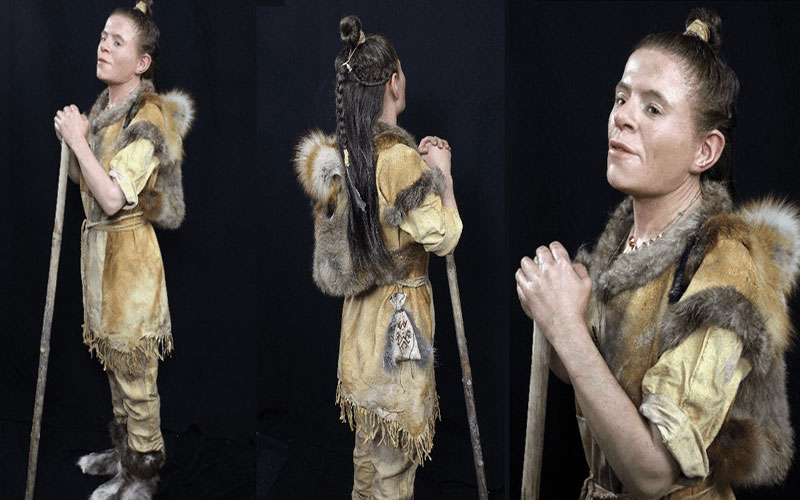
Reconstruction of a prehistoric woman in a museum in Sweden; Photo source: Västernorrlands museum; Name of the photographer: unknown
Gilligan also points out that the trajectory of the clothes lice we studied may not be the only one out there, and that there are likely other lice that occasionally infested clothes at different stages over the past millions of years. In other words, there have been other branches of clothes lice throughout history that have alternately adapted to human clothing. He says about this:
It is likely that different human groups have started and stopped using clothing many times throughout history.
For example, between 12,000 and 32,000 years ago (until the end of the last ice age) and probably to protect against the cold, the indigenous people of Tasmania took refuge in caves. Archaeological evidence shows tools such as skin scrapers and bone awls that were used to shave animal skins and sew clothes; But as the weather got warmer, the use of these tools and clothes disappeared and in other words, people stopped wearing clothes.
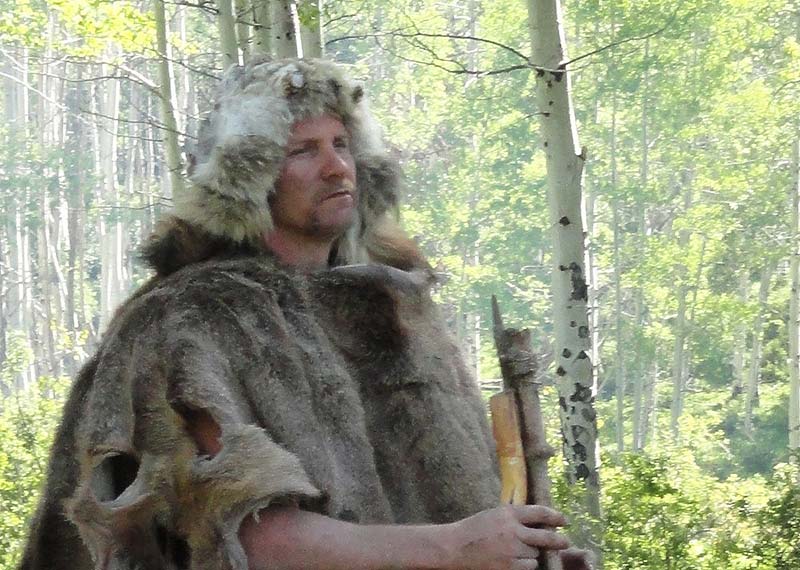
A man wearing a caveman’s mask; Photo source: today.com; Name of the photographer: unknown
Gilligan explains further:
Tools such as skin scrapers and bone awls disappeared from about 12,000 years ago to the mid-Holocene (11,700 years ago) and are no longer in the archaeological record.
In that period, instead of wearing clothes, people dyed their hair and painted their bodies, and with other decorations such as making intentional wounds, they no longer needed clothes.
The advancement of tools and the emergence of more sophisticated clothing
More sophisticated clothing, including those decorated with beads and shells, as well as tailored clothing (clothing tailored to the body’s shape), probably arose with the invention of awls and other sharp tools.
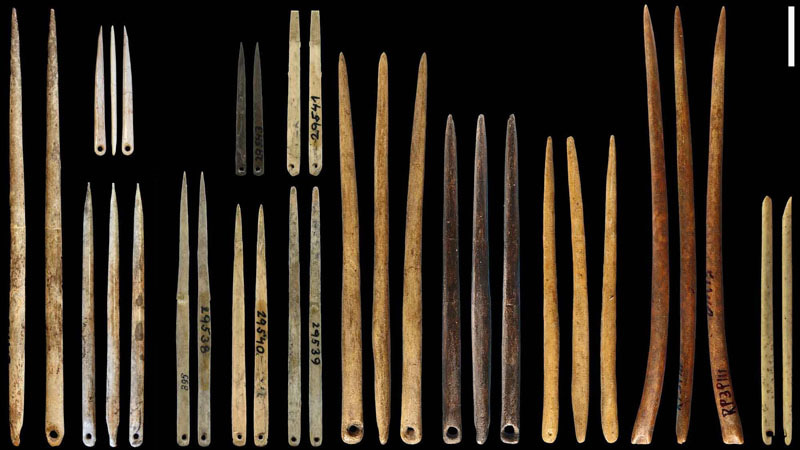
old needles of different sizes and shapes; Photo source: livescience; Name of the photographer: unknown
According to a study published in 2024 in the journal “Science Advances”, the emergence of more sophisticated and tailored clothing such as underwear probably began with the invention of perforated needles.
The oldest known perforated needles, dating back to about 40,000 years ago, were discovered in Denisova Cave in Siberia. Based on research and studies, these needles represent a new era of more sophisticated and efficient stitches.
Ian Gilligan, lead author of the research study, also said in a statement:
Perforated needle tools are among the important achievements of prehistoric times; Because they represent a fundamental change in the function of clothes. These tools show that clothes were no longer used only for practical purposes; They also pursued social and cultural goals.
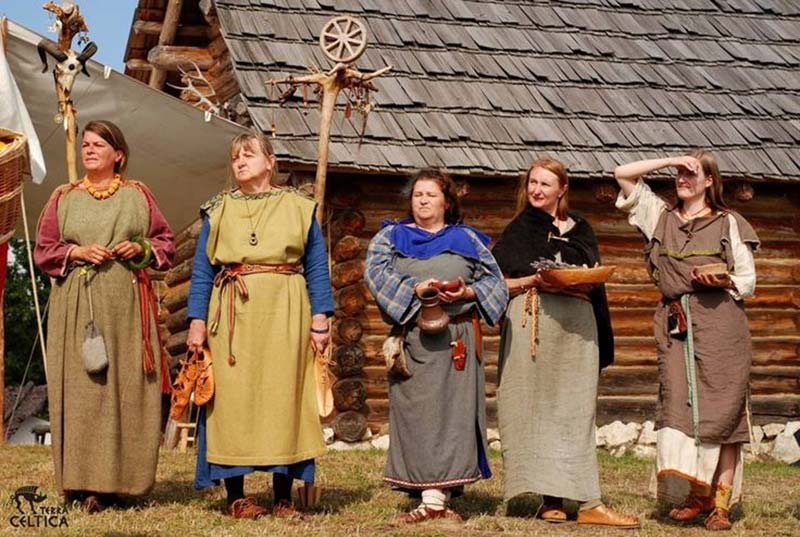
People in Iron Age clothes; Photo Source: Pinterest; Name of the photographer: unknown
What do you think about the history of human clothing? Have you done any research in this field? Please share your valuable opinion with Kajaro and its companions.
Cover photo: a man wearing animal skin clothes; Photo source: The Daily Galaxy; Name of the photographer: unknown
Frequently asked questions
When were the first clothes used by humans?
Evidence shows that human ancestors wore primitive clothes about 170,000 years ago during the Ice Age; But the use of animal skin for heating dates back to about 300,000 years ago.
When was the oldest sewing tool made?
The oldest needles with holes date back to 40,000 years ago, discovered in the Denisova Cave in Siberia, and were the beginning of more sophisticated clothing.
RCO NEWS















